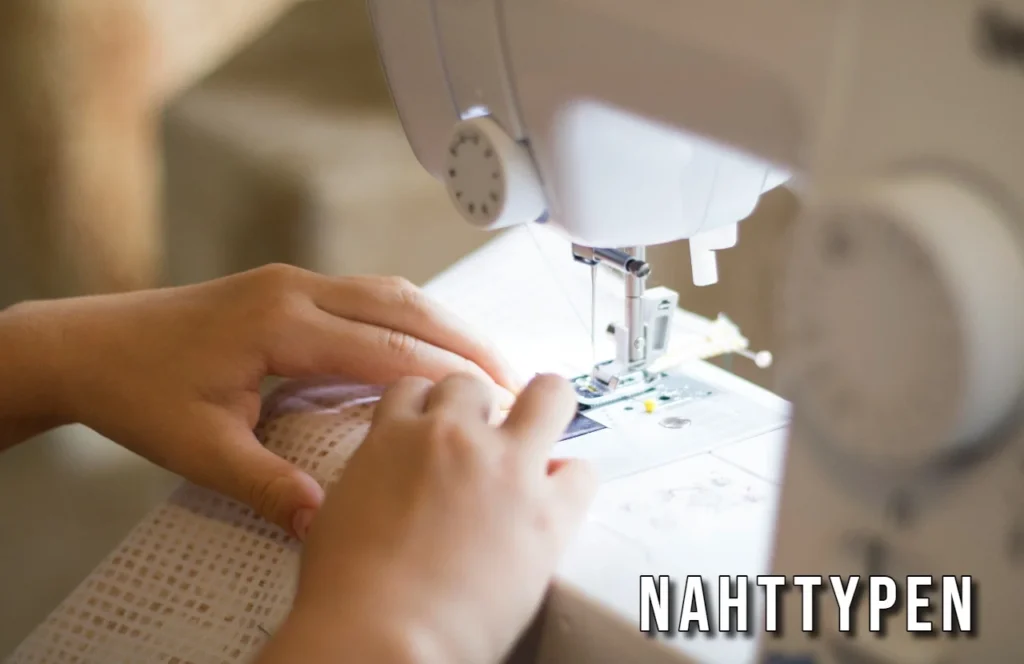Stitching is more than just connecting pieces of fabric; it’s an art that transforms raw materials into beautiful creations. Whether you’re a seasoned seamstress or just starting your journey, understanding the various Nahttypen—or stitch types—can elevate your projects to new heights. Each type of stitch serves its own purpose and complements different fabrics in unique ways. Choosing the right one not only enhances durability but can also add creative flair to your work.
Dive into the world of stitching and discover how these little details make a big difference in achieving professional-quality results. From basic seams to intricate designs, let’s unravel the secrets behind selecting the perfect stitch for every fabric you encounter!
Understanding Different Types of Stitches
When it comes to stitching, variety is abundant. Each type of stitch serves a unique purpose and offers distinct benefits.
The straight stitch is the most common choice. It’s versatile and works well for basic seams in nearly every fabric type.
Zigzag stitches are another favorite, especially for knit fabrics. They allow stretch while preventing fraying edges, making them ideal for garments that require flexibility.
For decorative purposes, consider using specialty stitches like satin or blind hem. These add flair and can elevate your project from simple to stunning.
If you’re looking for durability, the triple stitch provides added strength. This makes it perfect for heavy materials or areas subjected to stress.
Understanding these different nahttypen helps you tailor your sewing projects effectively. The right stitch can dramatically impact both function and aesthetics in your craft.
The Importance of Choosing the Right Stitch Type for Your Fabric
Selecting the right stitch type is crucial for achieving professional-looking results. Each fabric has its own characteristics, and using the wrong stitch can lead to unravelling or distortion. A sturdy canvas might require a heavier stitching approach, while delicate silk calls for something lighter and more refined.
Choosing wisely minimizes wear and tear on both your fabric and sewing machine. It ensures that seams remain intact through washing and wearing, preserving the integrity of your project.
Moreover, different stitches contribute stylistic elements to your work. A decorative stitch can elevate a simple garment into a statement piece. Understanding how each type interacts with various materials fosters creativity in design.
An appropriate stitch enhances comfort as well as durability. This attention to detail transforms ordinary creations into extraordinary ones that stand out for all the right reasons.
Common Types of Fabrics and Recommended Stitch Types
Choosing the right stitch type for your fabric can elevate your sewing projects. Different fabrics have unique characteristics that require specific stitches to achieve the best results.
Cotton is versatile and forgiving, making a straight stitch ideal for most projects. For stretchier materials like jersey knit, a zigzag stitch allows for elasticity while maintaining seam integrity.
Denim demands durability; use a heavy-duty straight stitch or even a triple-stitch technique. This will withstand wear and tear effectively.
Silk, on the other hand, needs gentle handling. A narrow zigzag or French seam helps prevent fraying and keeps delicate edges neat.
For upholstery fabrics, opt for a strong straight stitch complemented by topstitching to add visual appeal and reinforce seams in high-traffic areas.
Understanding these pairings enhances not only functionality but also aesthetics in your creations.
Tips for Testing and Choosing the Perfect Stitch Type
When selecting the ideal stitch type, testing is essential. Start by gathering fabric scraps similar to your project material. This allows you to see how different stitches perform.
Experiment with various threads too. A lighter thread might work for delicate fabrics, while a heavier one can support sturdier materials.
Use your sewing machine’s built-in features. Most machines have sample settings that help guide you in choosing the right stitch length and tension for each type of fabric.
Don’t hesitate to make adjustments as needed. If a stitch looks uneven or puckered, tweak the tension before proceeding further.
Keep notes on what works best with each fabric type. This personal reference will save you time in future projects and ensure consistent results every time you sew.
How to Adjust Your Machine for Different Stitch Types
Adjusting your machine for different Nahttypen is crucial for achieving the best results. Start by consulting your sewing machine manual to identify settings specific to various stitches.
Next, consider the thread tension. Looser tensions work well for decorative stitches, while tighter settings are ideal for utility stitches. Experiment with adjustments based on your fabric type and stitch style.
Also, pay attention to stitch length and width. Shorter lengths create a tight seam suitable for lightweight fabrics, while longer lengths can accommodate thicker materials or decorative purposes.
Don’t forget about needle types as well! Different needles can dramatically affect how a stitch performs on varying fabrics. Always test on scrap material before proceeding with your main project.
Maintain consistency in speed when sewing; this helps ensure even stitching regardless of the chosen type.
Conclusion: Mastering Nahttypen for Beautiful Stitching Results
Mastering Nahttypen is essential for achieving beautiful stitching results. The right stitch can elevate your project, whether you’re creating garments, home decor, or crafting unique items. With a solid understanding of different types of stitches and their appropriate applications for various fabrics, you’ll be better equipped to make informed choices.
Testing different stitch types on fabric scraps will help you discover what works best for your projects. Don’t hesitate to adjust your sewing machine settings as needed; this flexibility allows for precision in every seam. As you gain experience with various nahttypen, confidence will grow along with the quality of your work.
With practice and exploration of these techniques, you’re well on your way to becoming a skilled sewer who produces stunning pieces that showcase not just creativity but craftsmanship too. Embrace the journey—there’s always more to learn!






